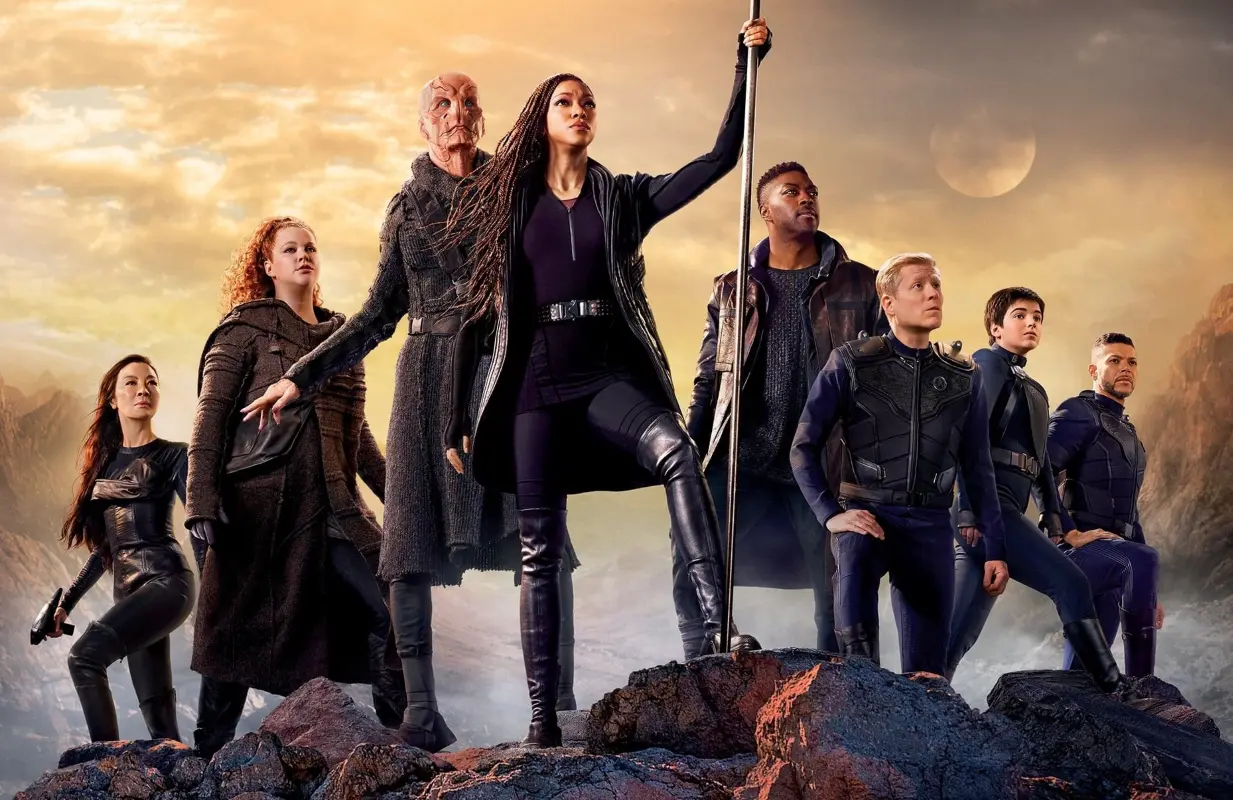How Star Trek: Discovery Changed Trek On TV
-
 <i>Discovery</i> has boldly gone where no Trek series has gone before. (Photo: Paramount+)
<i>Discovery</i> has boldly gone where no Trek series has gone before. (Photo: Paramount+)When Star Trek: Discovery premiered five years ago this week, it carried some heavy cargo. For one thing, the show was expected to herald the new streaming service CBS All Access (which has since become Paramount+) and drag the Tiffany network’s viewers into the digital age. At the same time, it had to outrun the legacy of Enterprise (the low-rated, critically reviled UPN series that ended in 2005) and somehow contend with the sleek, sexy, and action-oriented aesthetic of the Trek movies directed by J.J. Abrams.
Flash forward five years, and Discovery is the flagship of an armada that includes both live-action series (Picard and Strange New Worlds) and animated offerings (Lower Decks and Prodigy). With a fifth season expected in early 2023, the show hasn’t simply overcome enormous expectations. It’s now leading a new golden age of Trek on TV. So how did we get here?
It helps that Discovery creators Bryan Fuller and Alex Kurtzman were given the freedom to explore weird corners of the galaxy. While the show is basically a prequel to 1966's Star Trek, it debuts concepts like the "spore drive," a mycelial network that can be ridden anywhere in space. That conceit is outlandish, but it works because it looks and sounds cool.
Between Seasons 2 and 3, the show also jumped 930 years into the future. The radical shift, which called for completely new production design and technological innovations, also introduced new characters with ongoing plotlines.
That was a risk, but instead of suffocating outside the comfort zone it built over the first two seasons, the show soared. Leaning hard into an anything's-possible ethos gave the writers permission to champion ever-more ridiculous experimentation, and then watch it bloom. That's really what Discovery is about: not outdoing itself for its own sake, but taking chances because the creators see stories in every direction.
Some of the ideas don't stick, but there's a steady tone of sophistication. And while flashy production values and flying cameras are almost laughably indebted to Abrams, the show's many huggy moments are infused with the language of therapy and mental wellness. No Trek show has ever married such intricately plotted science with such open-wound drama.
None of this would work without compelling characters, and that’s another area where Discovery shines. Michael Burnham, our protagonist, at first tread dangerously close to cliché territory, having been raised as Spock's half-sister (and carrying that half-human/half-Vulcan curse everywhere she goes). And yet, as she evolved from a brilliant, Vulcan-esque logician into something like a messianic figure, she's stayed fundamentally relatable. As played by Sonequa Martin-Green, Burnham is less diplomat and more nervy problem-solver, driving every episode forward with quiet, radiant ferocity and at-times questionable choices. You're not always supposed to like her, but you do.
It matters, too, that Discovery is not only the most diverse Trek series to date, but also the most casual about diversity. Ship's engineer Paul Stamets (Anthony Rapp) and Dr. Hugh Calber (Wilson Cruz) are played as senior officers and lovers who happen to be gay, not as capital-G gay characters who are defined by their sexuality.
The same is true for the excellently named Jett Reno (Tig Notaro), who is most notable for her bone-dry wit, and for the couple Adira Tal (Blu del Barrio) and Gray Tal (Ian Alexander, as the first transgender Trek character played by a transgender actor). The Tal's vulnerability and youthful spark pops right off the screen, forcing us to think about who gets to take up space on the bridge of a starship.
Discovery is, at last, merciful. It throws a lot at us but doesn't require Game of Thrones loyalty to enjoy it. Managing a balance that has often eluded other Trek series, the show nimbly moves between standalone episodes and ongoing explorations of the USS Discovery’s crew. This creates multiple ways to appreciate the show, whether you’re an avid viewer or a casual fan, and that has helped it thrive as great TV.
Star Trek: Discovery streams on Paramount+.
People are discussing Star Trek: Discovery in our forums. Join the conversation.
Note: An earlier draft misstated the relationship between the Tals. This piece has been updated to reflect that they are a romantic couple.
John Wenzel is an arts reporter and critic for The Denver Post who has written for Rolling Stone, Esquire, The Atlantic and Vulture. He grew up in Dayton, Ohio, worshipping Guided by Voices and The Breeders, and has a hobbit garden in his front yard.
TOPICS: Star Trek: Discovery, Paramount+, Sonequa Martin-Green